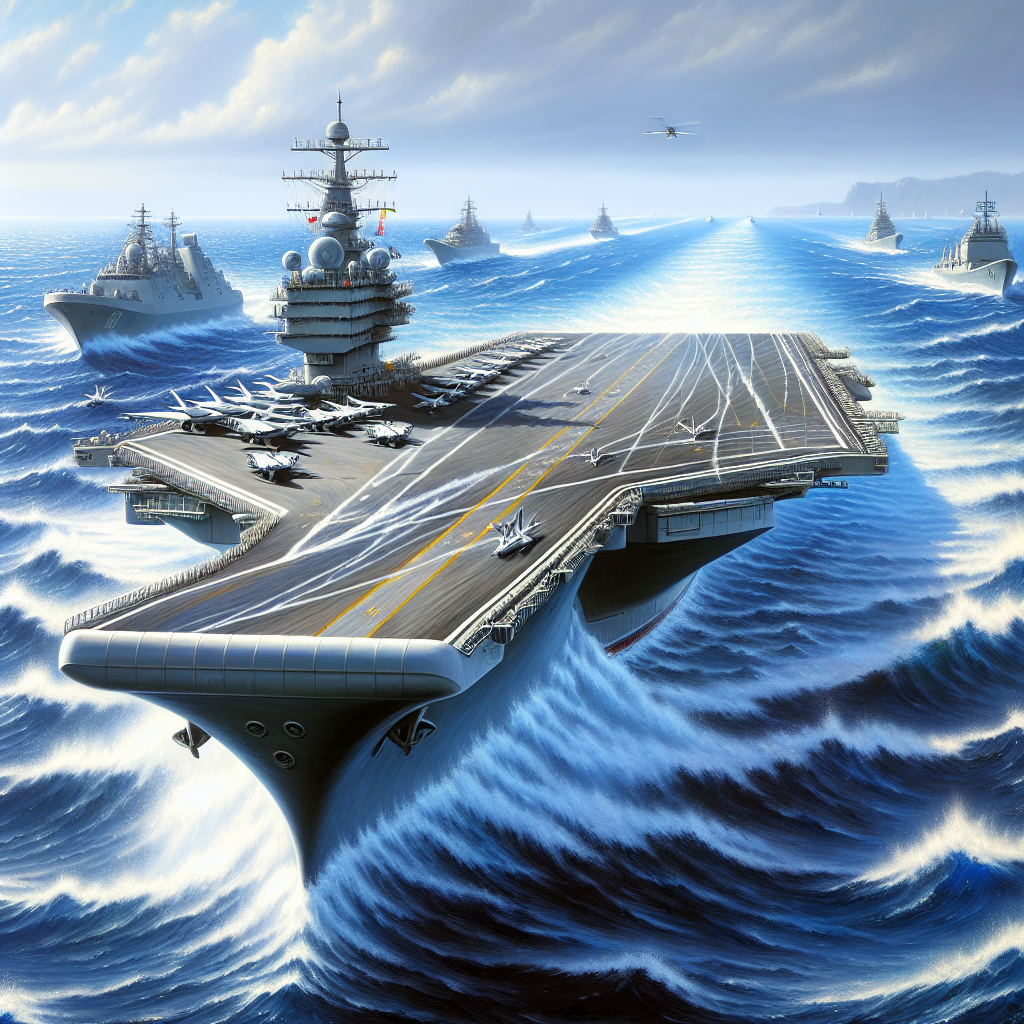On Wednesday, May 28, Japan and Taiwan authorities announced that the first aircraft carrier of the Chinese Communist Party (CCP), the “Liaoning,” has been deployed and is active in the Pacific Ocean. Japan and Taiwan are closely monitoring the movements of the “Liaoning” aircraft carrier and its accompanying warships, with Japanese fighter jets taking off to respond to CCP carrier-based aircraft.
The Taiwanese Ministry of National Defense stated in a press conference on the 28th: “Currently, we have information that the Liaoning aircraft carrier is in the (Taiwan) area.” The ministry added: “The armed forces are utilizing unified surveillance means to monitor and closely track the CCP’s movements.”
This week, Japan has been tracking the Liaoning aircraft carrier and its accompanying warships as they pass through the southern islands of Japan into the western Pacific Ocean. Japan’s Chief Cabinet Secretary, Yoshihide Suga, told reporters on Wednesday that the Japanese government is closely monitoring the movements of the CCP warships and striving for flawless vigilance and monitoring activities in our country’s surrounding maritime and airspace.
The Japanese Ministry of Defense’s Joint Staff Office released a public announcement on Wednesday, stating that on May 25, around 7 a.m., the Japan Maritime Self-Defense Force discovered five CCP naval vessels, including the Liaoning, sailing about 200 kilometers north of Kuba Island in Okinawa Prefecture. On the same day, the Japanese Maritime Self-Defense Force observed the Liaoning conducting multiple takeoffs and landings of carrier-based fighter jets and helicopters.
The Defense Ministry indicated that the Japanese Maritime Self-Defense Force aircraft monitored the activities of the Chinese naval vessels, with Air Self-Defense Force fighter jets being scrambled in response to CCP carrier-based fighter jets.
The Japanese Joint Staff Office further announced that the Liaoning, on Tuesday (27th), crossed through the Miyako Strait in a southeast direction towards the Philippine Sea. Eight hours after passing through the strait, the Liaoning operated in the waters southeast of Miyako Island in southwestern Japan. The CCP’s Type 055 destroyer, Nanchang, and Type 052D destroyer, Qiqihar, also joined the Liaoning’s operations with their respective hull numbers visible.
Additionally, before the Liaoning passed through the strait, Japan observed the aircraft carrier conducting flight missions in the East China Sea from Sunday to Monday. The carrier-based fighter jets and helicopters performed 90 and 30 takeoffs respectively.
According to the map provided by Japan’s Joint Staff Office, Chinese naval vessels have been located outside Japan’s territorial waters (extending up to 13.8 miles from the coastline) but within Japan’s exclusive economic zone, which extends 230 miles.
The Japan Maritime Self-Defense Force escort vessels and patrol planes have been placed on alert, and Air Self-Defense Force F-15 fighter jets have been urgently dispatched to respond.
The Japanese Joint Staff Office stated on Wednesday: “Yesterday, there was a risk of airspace infringement in the East China Sea and the Pacific Ocean, and the F-15 fighter jets of the Air Self-Defense Force’s western air defense unit were scrambled.”
Chinese Foreign Ministry spokesperson, Mao Ning, argued during a press conference on Wednesday that the activities of the Chinese Navy comply with international law and practices and urged the Japanese side to view this matter “objectively and rationally.”
Based on the U.S. “Island Chain” strategy, the U.S. military and allied countries have established three defense lines to restrict the Chinese military from entering the Pacific. The first island chain, closest to China, is composed of Japan, Taiwan, and the Philippines.
According to three regional security officials and regional military activity documents reviewed by Reuters, since early May, China has deployed a larger fleet than before in the vicinity of Taiwan, the southern islands of Japan, and the East and South China Seas, including navy ships, coast guard vessels, and other vessels.
The documents reveal that on May 21 and 27, China deployed nearly sixty and over seventy vessels respectively, with about three-quarters being navy ships, including missile frigates, destroyers, and coast guard ships. China also dispatched two aircraft carrier battle groups, with the Shandong currently located in the busy sea lanes of the South China Sea and the Liaoning positioned off the southeast coast of Taiwan.
Meanwhile, the U.S. Navy this week deployed two aircraft carriers to different areas in the western Pacific: the USS Nimitz aircraft carrier operating in the South China Sea and the USS George Washington aircraft carrier operating near Japan.

